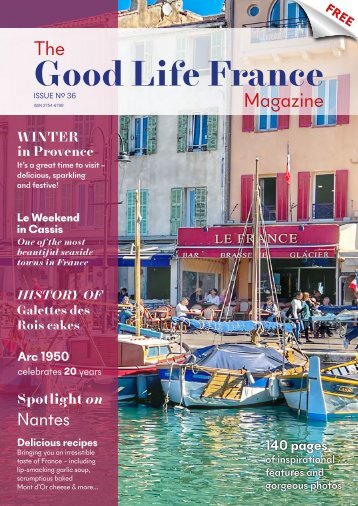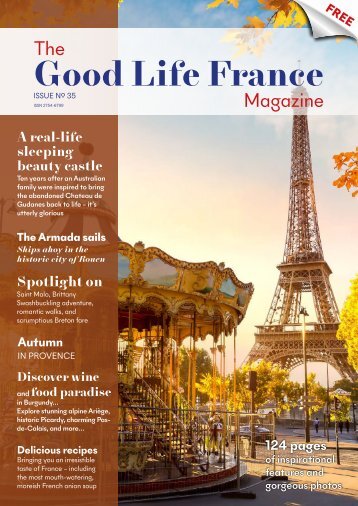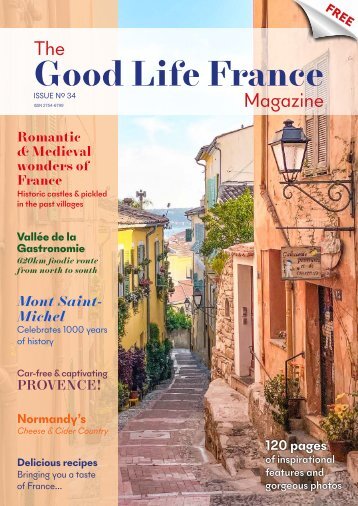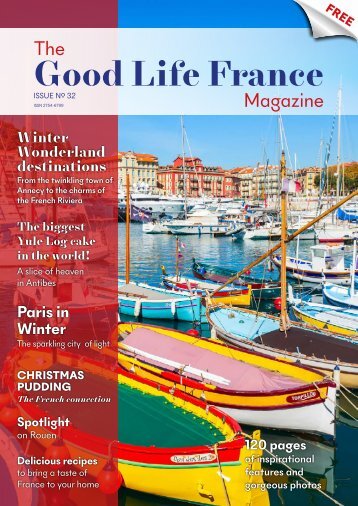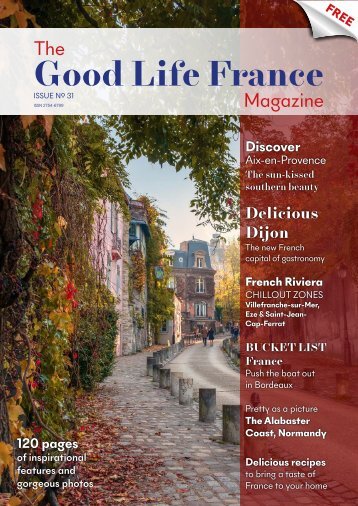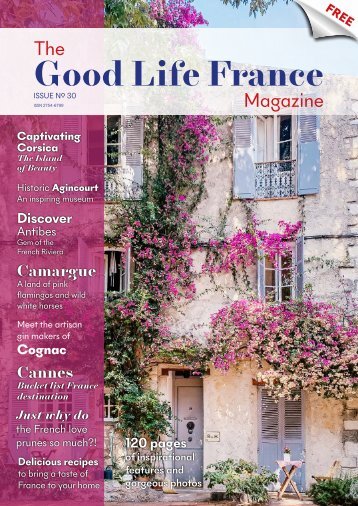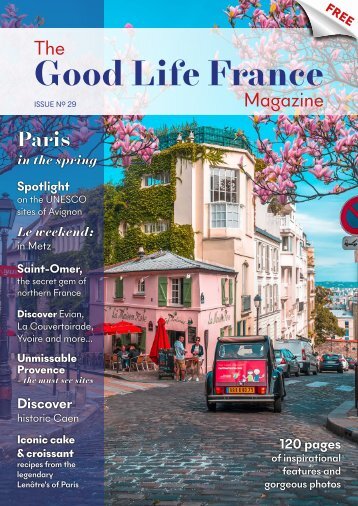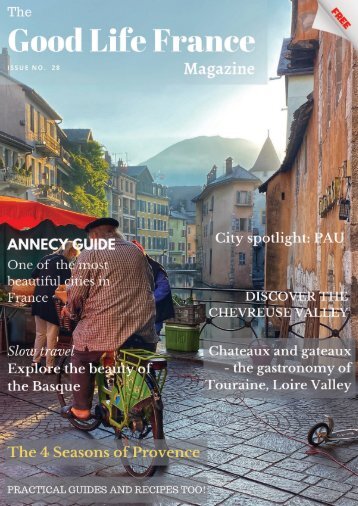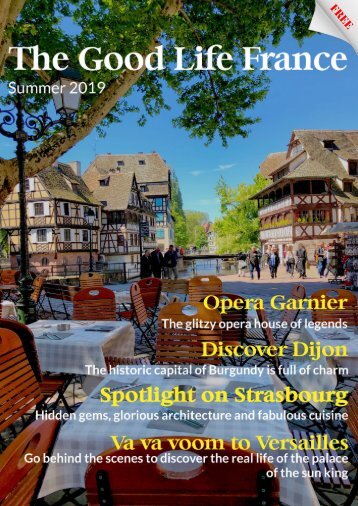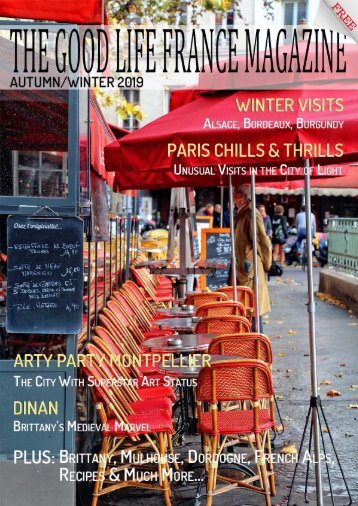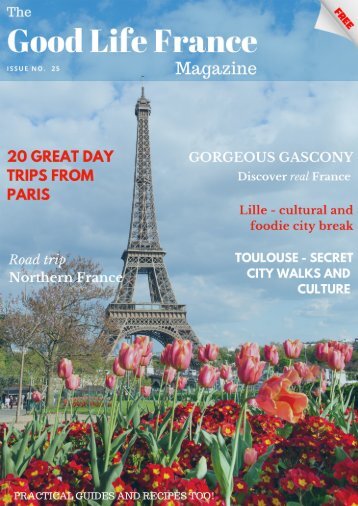
The Good Life France Magazine
The Good Life France Magazine brings you the best of France - inspirational and exclusive features, fabulous photos, mouth-watering recipes, tips, guides, ideas and much more...
Published by the award winning team at The Good Life France
Summer 2022
AGINCOURT revisited
AGINCOURT revisited Words: Gillian Thornton and Janine Marsh 38 | The Good Life France
There are no real winners when two nations fall out, but today we live in an age when wars can rumble on for years and involve countless civilian casualties. So it’s a surreal experience to look over a field where an international conflict – legendary for hundreds of years – was all wrapped up before teatime. The Battle of Agincourt kicked off in heavy rain late in the morning of October 25th 1415, St Crispin’s Day, and by mid-afternoon, the cream of French nobility had been cut down in the mud by the firepower of English archers. The English army, believed to be around 8,500 men, marching to Calais to return home by boat after a campaign in Normandy and led by King Henry V, faced a French army of around 12,000 men. Henry’s army of English soldiers and largely from Wales archers, were already exhausted and suffering from dysentery. Some of them removed their trousers and fought half naked. Many of them kissed the earth of this corner of Pas de Calais in northern France, believing they would be buried in it later that day. Henry V heard Mass, not just once, but three times. The French were led by the Constable of France Charles d’Albret and Marshal Jean II le Meingre (Boucicaut). The battle ‘barely lasted a few hours’ says Ludovic Hiltenbrand, manager of the Centre Azincourt 1415, but it was a decisive victory for the English and became the stuff of legend. The French, wearing heavy armour and bogged down in mud were cut down as armour-piercing arrows with a range of 250 yards were unleashed from the innovative longbows of their enemy. Among the lost was Gallois de Fougières, a Marshall of France, effectively the first recorded gendarme to have died in the line of duty. The uniformed official we know today, the ‘Gendarme’, is a derivative of ‘gens d’armes’, or people with arms (weapons), hence the expression ‘to take up arms.’ Look for Agincourt on the map and you won’t find it. The village is actually called Azincourt, nestled in the lush countryside of The Seven Valleys. The change of spelling is down to a mispronunciation by an English knight when asked by Henry V for the name of the nearby fortress. You can still see the field where the face off took place, most of it now farmland and all of it bordered by quiet country roads – a 4km circuit on foot or by car. In the heart of the village, you’ll find the excellent Centre Azincourt 1415 museum. The Good Life France | 39
- Page 1: FREE The Good Life France ISSUE N
- Page 4 and 5: To Subscribe to THE GOOD LIFE FRANC
- Page 6 and 7: 26 26 The Treasures of Arles Gillia
- Page 8 and 9: Captivating Calanques de Piana Crui
- Page 10 and 11: affair, four courses and wine - eve
- Page 12 and 13: Calanques de Piana Piana Calanques
- Page 14 and 15: TOUJOURS LA FRANCE Warm, uplifting
- Page 16 and 17: GREAT CANAL, RIVER AND OCEAN CRUISE
- Page 18 and 19: Spotlight on: Aisne The department
- Page 20 and 21: The streets around the Cathedral ar
- Page 22 and 23: 22 | The Good Life France
- Page 24 and 25: 4 Must-sees in Aisne Champagne Chat
- Page 26 and 27: The Treasures of Arles © David Jur
- Page 28 and 29: 28 | The Good Life France
- Page 30 and 31: Artists in Arles No surprise then t
- Page 32 and 33: The wild wetlands of France Where w
- Page 34 and 35: For a lifelong rider like me, the c
- Page 36 and 37: 36 | The Good Life France
- Page 40 and 41: Centre Azincourt 1415 The totally r
- Page 42 and 43: A video demonstrates how a knight p
- Page 44 and 45: Antibes Juan-les-Pins - paradise on
- Page 46 and 47: Le Marché Provençal The daily cov
- Page 48 and 49: 48 | The Good Life France
- Page 50 and 51: BUCKET LIST France: Cannes 50 | The
- Page 52 and 53: Mademoiselle Gray beach bar and res
- Page 54 and 55: Jardin des Plantes Pierre-Joseph Re
- Page 56 and 57: At the age of 23, Redouté arrived
- Page 58 and 59: During the 1790s, Redouté gained i
- Page 60 and 61: Green wines of France… 60 | The G
- Page 62 and 63: that less is more when it comes to
- Page 64 and 65: The expat ARTISAN GIN makers of Cog
- Page 66 and 67: moved to Cognac in 2008 to do up a
- Page 68 and 69: It's so nice out... Dear Holiday Ho
- Page 70 and 71: The UNESCO listed treasures of Burg
- Page 72 and 73: Basilica and hill of Vézelay An ho
- Page 74 and 75: 74 | The Good Life France
- Page 76 and 77: © Agen Tourisme THE PRUNE route of
- Page 78 and 79: Agen Agen is the centre of France
- Page 80 and 81: Château de Digoine, Burgundy Have
- Page 82 and 83: 82 | The Good Life France https://w
- Page 84 and 85: ties. As for me, I didn’t inherit
- Page 86 and 87: What’s New? Roundup of openings a
- Page 88 and 89:
Marathon du Médoc, Bordeaux: Septe
- Page 90 and 91:
Your Photos Every weekend we invite
- Page 92 and 93:
Tours de France Travel is back! And
- Page 94 and 95:
What’s the Best Way to Learn Fren
- Page 96 and 97:
MOVING TO FRANCE? ClickMoves.com ca
- Page 98 and 99:
France has huge allure for movie pr
- Page 100 and 101:
Villefranche-sur-Mer © Peter Jones
- Page 102 and 103:
How to become a France No matter wh
- Page 104 and 105:
Beacon Global Wealth Management Sta
- Page 106 and 107:
The Wine Expert’s GUIDE TO THE La
- Page 108 and 109:
methods, shape Languedoc AOCs, prod
- Page 110 and 111:
Your one stop shop for the finest q
- Page 112 and 113:
Chicken with 40 cloves of garlic 11
- Page 114 and 115:
Far Breton A rich custard and prune
- Page 116 and 117:
Sticky Prune & Toffee Pudding 116 |
- Page 118 and 119:
Last Word In the last 18 years sinc
- Page 120:
WE LOVE TO SHARE JOIN US ON: Subscr
Inappropriate
Loading...
Mail this publication
Loading...
Embed
Loading...



